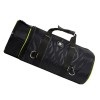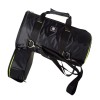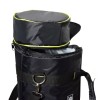-
Posts
3,880 -
Joined
-
Last visited
-
Days Won
2
Content Type
Profiles
Forums
Gallery
Events
Blogs
Posts posted by teoria_del_big_bang
-
-
7 minutes ago, malc-c said:
I'm missing something here... why do you need to correct (erect) the star image when used as a guide scope ? -
You don't,
I was a bit confused also but I think currently the OP wants to still use the Finder/Guidescope as a finder for visual use and the guidescope is just a future plan.
That's how I read it anyway after a 2nd read through, I guess @Penumbrella will explain when on line again 🙂Steve
-
 1
1
-
-
I have M4 X 5mm long or 12 mm long but can get 6 mm long from Ebay for £3 for 10, I know you may not need 10 but I think to order a couple is £2.50 or so thats why I tend to order a larger quantity as they always come in handy eventually.
Let me know I can send you some of the 5 mm ones if you want.Steve
-
I probably have some M4 countersunk (or Vee heads) is that what you are after ?
Not sure what length I will have a look.
Steve
-
That s impressive 🙂
Steve
-
 1
1
-
-
Welcome James to SGL, were practically neighbours 🙂
Although dark sites are far better for any astronomy (whether observing or imaging) it is not essential for astrophotography. and in fact most images on SGL will not be from dark sites at all and some from in and around very light polluted cities so you can still get some great images of many targets from your back garden or patio.
However, which ever route you eventually take starting with visual is probably the best any way
I started thinking I would only do visual and bought a secondhand dobsonian, and found that a great start to learn where some of the things are in the sky and get some great views, eventually I did then cross over to doing mainly AP.Steve
-
I am no expert but to me I would say it has some tilt.
Top right look pretty round.

Bottom right look fairly round

Top Left look a little elongated that could be caused by incorrect BF from CC

And bottom left also look a little elongated.

This camera is a fair bit heavier than the 1600 so with a stock focusser could cause tilt (not that I know you have a stock focusser).
Steve
-
 1
1
-
 1
1
-
-
1 minute ago, gorann said:
Thanks Steve, much appreciated! It may clear up here tomorrow night so I may temporarily stop recycling old stuff....
I am glad for you, wish it was the same story here, no good outlook for at least a week 😞
Steve
-
 1
1
-
-
Wow, I never thought I would be grateful for clouds but they have played a part in a beautiful image there Göran 🙂
I love this target and that is a great rendition of the squid in all its glory.Steve
-
 1
1
-
 1
1
-
-
Brilliant 🙂
Steve
-
 1
1
-
-
I don't think I would fair very well carting my gear out across 3 lanes, even at night, it takes me all my effort to get it out of the garage onto the patio, far too heavy 🙂
If a car didn't get me I think I would probably suffer some other fatal incident at some stage.Steve
-
7 minutes ago, Deadlake said:
UNC and Imperial I thought where different.
UNC is just a type of imperial thread sizes (Unified National Coarse) and so is dimensioned in inches and requires imperial allen keys.
Therewereare many different types of imperial threads UNC, UNF, BSW, BSF are probably the common ones. Since Europe went metric they are not very common in Europe but many things manufactured in US for example still have imperial threads.Steve
-
 1
1
-
-
1 minute ago, Len1257 said:
Quick Google to my usual fastener sources and https://www.gwr-fasteners.co.uk/8-32-x-38-unc-socket-button-head-screws---a2-stainless-steel-71010-p.asp reveals it to be 3/32 inch size. Available all over.........
Tend to stay away from Amazon for tools..........
I was just about to post that an imperial key between 2 and 2.5 mm is 3/32" 🙂
Steve
-
 1
1
-
-
36 minutes ago, Deadlake said:
The starlight focuser finder scope mounting point has UNC 8-32 button screws.
The hex like bolt head is somewhere between a 2-2.5 mm hex bolt head size for an Allen key.
Searching an Amazon I cannot find an equivalent set of UNC sized Allen keys, do they even exist?Yes search for imperial allen keys.
Steve
-
18 minutes ago, Felias said:
Personally, I have found that using starnet seriously damages my photos. Maybe it's my noisy data, but the circles around the stars are horrible, the pictures end up looking like Emmental cheese -and I suspect it increases the noise as well. You can see those circles clearly in your photo above; it's bad enough for the bigger stars, but those around the smaller ones create a "foamy" background or red and green noise. I now use a star mask in photoshop to protect the stars; it works fine, especially if after each stretch one uses the 'fade' function, and doesn't create such artifacts.
I did a few tests on a recent image that was proving particularly difficult to make starless due to 2 very bright stars and found that Starnet2 worked much better then Starnet but StarXTerminator using AI StarXTerminator.7 was by far the best and that doing it at the linear stage also worked much better than the non linear stage.
I think that it does pay to play about a bit with the different methods of making images starless as they can produce vastly different results, some certainly not favorable, and to be careful in Starnet2 and StarXTerminator to check the linear checkbox if data has not been stretched (I think the results indicate quite clearly that you forgot to do this if you do forget).
But I do agree that making starless images without artefacts is not always straightforward and I think some targets work better than others.Steve
-
 1
1
-
 1
1
-
-
46 minutes ago, Padraic M said:
I replied too soon! 🙂
Good to know that. I had assumed that if you want automation including an electronic rotator, you would also have to add a flip-flat-type flat panel so that flats could be taken automatically as part of the sequence. And those flip-flats ain't cheap!
No, but I did add one, also DSD and very happy with it, no affiliation to DSD so sorry to go on how good I have found them (for the price) but for the price it is a great panel, by altering the light intensity instead of exposure length, which NINA can do automatically, I can get all flats 3 seconds exposure length and therefore use the same 3 second master dark from a dark library.
However (don't want to go off topic too much) I have seen one issue where by it can collect a lot of dew through the night and then when it closes it dumps it all on the lens and you get very strange flats.
Not tried it since but I am hoping a combination of change of angle of the flip flat and also making sure the scope is flat before closing the panel will sort that out.Steve
-
 1
1
-
-
3 minutes ago, Padraic M said:
Do you bother with separate flats for the two rotations? Does it make a difference?
So I would say it is not a must do and would be quite happy to use one set of flats, if I have time then I do take them.
Steve
-
1 minute ago, Padraic M said:
Do you bother with separate flats for the two rotations? Does it make a difference?
Sorry I edited the post to add the following which you must not have seen 🙂
As already mentioned though ideally you should use separate flats for each of the rotations. In practice when I check I see very little difference between flats at different rotations as I think most of the visible dust bunnies and vignetting seems to be cause by things after the rotator (filters, CCD) but still when I can I do take separate flats and so it is a good idea to add the rotation angle to the image filename (easy in NINA) so you can replicate the same angle for the flats.Steve
-
 1
1
-
-
Also where an automatic rotator becomes very useful is when adding two targets to the nights sequence (maybe 1st target foes out of view at some point in the evening) that really do need a very different rotation to get them in the correct framing as you can use two previous images, or even use two images found on line with correct framing if you do not have previous images) and the software (certainly EKOS and NINA will) will platesolve and rotate to correct framing whilst the rig was left unattended and you are getting some zzzzzz's in.
As already mentioned though ideally you should use separate flats for each of the rotations. In practice when I check I see very little difference between flats at different rotations as I think most of the visible dust bunnies and vignetting seems to be cause by things after the rotator (filters, CCD) but still when I can I do take separate flats and so it is a good idea to add the rotation angle to the image filename (easy in NINA) so you can replicate the same angle for the flats.
Steve
-
16 minutes ago, Adreneline said:
P.S. On my 6" RC I use a Baader Click-Lock - provides total flexibility of camera angle but I still position mine in 'portrait'.

C.S.
I too have this setup on my RC and would agree it makes manual rotation pretty easy.
Steve
-
 1
1
-
-
Is a rotator necessary for imaging ? As already discussed No.
Is it useful to have one ? Well I had a bit of cash built up due to birthdays and so on and bought one and I love it, so my experience is yes they can be useful.
When imaging targets that only just fit in the FOV (Heart Nebula springs to mind) then it really comes into its own, and although I have not ventured into mosaics yet from what I have seen in NINA especially it makes taking a mosaic so simple even in one sequence.
But then again as@Adreneline says then this ease in NNA of doing mosaics could be used for any image and then crop.
Smaller targets then it makes no difference as quite often a fairly hefty crop takes place anyway so not to drown the target with background.
Also not everyone has the advantage of manual rotation by rotating camera, I didn't as everything was fixed from focusser down to camera. There is supposedly a manual rotator on the Esprit 100 but I could never get the thing to work as it took so much effort to loosen the thing on the first place and then if you did not tighten it enough it moved so easily so I never even tried to use the scopes rotator.
So I guess for me the question would be is it worth £500+ for the ease of rotating the framing from your laptop.
And, secondary is if doing mono and already have a filter wheel in the train how easy can you fit one in the BF ?
I had a pretty thin FW (18 mm I think) but only had a small distance to fit a rotator and originally bought the Falcon which according to the spec should have just fitted with 1 to 2 mm to mess with small spacers to get the BF spot on but when it arrived it was thicker than the specification and with an adaptor was too thick to fit in the train without violating the ideal BF in the end I got the DeepSkyDad rotator, probably the cheapest automatic rotator on the market and it fitted just fine and so far not seen any issues with added tilt and works flawlessly with many sequence software (I have used with NINA and EKOS).Steve
-
 1
1
-
-
Regarding the misconceptions of PLA I always thought that manufacturers of things such as PLA cups and other disposable everyday objects actually manufactured the idea of it being biodegradable to sell their products.
I guess reading the technical stuff in theory it is biodegradable in very exceptional circumstances that do not naturally occur and certainly not in landfill.Yes, it does degrade and over time it does become more brittle, but so do most plastics.
So as said previously I would say use PLA if you need something particularly stiff (well as stiff as you can expect a plastic to be).
I tend to use PETG a lot I like the way it prints and for many thinks I like the slight flex it has as is prevents it breaking under a lot of circumstances but then if I do need something that does not flex so much I would use PLA without hesitation.ABS I just gave up using years ago as I could never get objects of a reasonable size to stop warping.
Steve
-
No not touched it, the edit was just a typo correction.
But after looking at it again I also thought it looked very bright as well.Steve
-
11 minutes ago, ollypenrice said:
I think your OIII is working beautifully to bring out what is a very faint outer shell, often missed by imagers doing this target. I know the OIII features are not 'in your face' but I really think they lift the target. The colour variety is good. Mine is in LRGB with Ha and OIII and, apart from the OIII shell, the rest of the nebulosity is very samey in colour. I might ease off on the saturation, though!
Olly
Thanks you Olly, that means a lot.
i intend to go though the processing again and will reduce the saturation a bit 🙂Steve
-
Looking for best case or bag for a RC6.
I have seen THIS one which looks okay and I think will just fit the scope with focusser attached, but if dimensions are to the outside of the bag then it will be close and I really do not want to remove the focusser at all. I just wondered what other RC owners use.


Steve


















EP46 - Saturday, 8th May 2021 7:30pm BST - Pixinsight - Advanced Calibration Concepts by Adam Block
in StarGaZine
Posted
This was from nearly a year ago
Steve